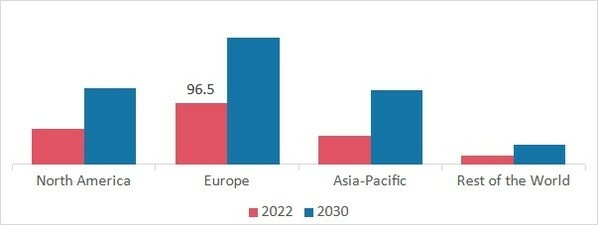Market Trends
Introduction
As we enter 2024, the Digital Utility market is experiencing transformative shifts driven by a confluence of macro factors including rapid technological advancements, evolving regulatory frameworks, and significant changes in consumer behavior. The integration of smart technologies and IoT solutions is reshaping operational efficiencies and service delivery, while regulatory pressures are compelling utilities to adopt sustainable practices and enhance transparency. Additionally, consumers are increasingly demanding personalized and reliable services, pushing utilities to innovate and adapt their offerings. These trends are strategically important for stakeholders as they navigate a complex landscape, requiring a proactive approach to leverage emerging opportunities and mitigate potential risks.
Top Trends
-
Increased Adoption of Smart Grids
Smart grids are becoming essential for utilities to enhance efficiency and reliability. For instance, the U.S. Department of Energy reported that smart grid technologies could save up to $200 billion by 2025. Companies like Siemens are leading the way in integrating IoT and AI into grid management. This trend is expected to reduce outages and improve energy distribution, ultimately lowering operational costs for utilities. -
Decentralization of Energy Production
The shift towards decentralized energy production is gaining momentum, with more consumers generating their own energy through solar panels. In Germany, over 50% of electricity is generated from renewable sources, showcasing a successful model. This trend is driving utilities to adapt their business models, focusing on energy management services rather than traditional supply. Future implications include increased competition and innovation in energy solutions. -
Enhanced Cybersecurity Measures
As digital utilities become more interconnected, the risk of cyberattacks increases. A report indicated that 70% of utilities experienced a cyber incident in the past year. Companies like IBM are investing heavily in cybersecurity solutions tailored for the energy sector. Enhanced cybersecurity measures are crucial for protecting infrastructure and maintaining consumer trust, with future developments likely focusing on AI-driven threat detection. -
Integration of Renewable Energy Sources
The integration of renewable energy sources is reshaping the utility landscape, with wind and solar expected to account for 50% of global electricity by 2030. Major players like Accenture are helping utilities optimize their operations for renewables. This trend is driving investments in energy storage solutions, which are essential for balancing supply and demand. Future developments may include advanced grid technologies to facilitate this integration. -
Data Analytics for Operational Efficiency
Utilities are increasingly leveraging data analytics to enhance operational efficiency and customer engagement. A study found that companies using advanced analytics can reduce operational costs by up to 15%. Firms like Oracle are providing analytics solutions that help utilities predict demand and optimize resource allocation. This trend is expected to lead to more personalized customer experiences and improved service delivery. -
Focus on Customer-Centric Services
Utilities are shifting towards customer-centric services, driven by the demand for personalized energy solutions. A survey indicated that 80% of consumers prefer utilities that offer tailored services. Companies like Microsoft are developing platforms that enable utilities to engage customers effectively. This trend is likely to enhance customer loyalty and satisfaction, with future implications for service diversification. -
Regulatory Support for Sustainability Initiatives
Governments worldwide are implementing regulations to support sustainability in the utility sector. For example, the EU's Green Deal aims to make Europe climate-neutral by 2050. This regulatory environment is encouraging utilities to invest in sustainable technologies and practices. The trend is expected to drive innovation and collaboration among industry players, with future regulations likely focusing on emissions reduction. -
Rise of Electric Vehicles (EVs)
The proliferation of electric vehicles is significantly impacting the utility market, with EV sales projected to reach 30% of total vehicle sales by 2030. Companies like General Electric are investing in EV charging infrastructure to support this growth. This trend is prompting utilities to adapt their grid management strategies to accommodate increased electricity demand. Future developments may include smart charging solutions to optimize energy use. -
Investment in Energy Storage Technologies
Energy storage technologies are becoming critical for managing renewable energy supply and demand. The global energy storage market is expected to grow significantly, with lithium-ion batteries leading the charge. Companies like ABB are innovating in this space, providing solutions that enhance grid stability. This trend is likely to facilitate greater adoption of renewables, with future advancements focusing on cost reduction and efficiency. -
Collaboration and Partnerships
Collaboration among utilities, technology providers, and governments is becoming essential for driving innovation. A report highlighted that 60% of utilities are engaging in partnerships to enhance service delivery. Companies like Cisco are forming alliances to develop smart city solutions that integrate utility services. This trend is expected to foster innovation and accelerate the deployment of advanced technologies in the sector.
Conclusion: Navigating the Digital Utility Landscape
The Digital Utility market in 2024 is characterized by intense competitive dynamics and significant fragmentation, with both legacy and emerging players vying for market share. Regional trends indicate a growing emphasis on sustainability and flexibility, as utilities adapt to evolving consumer demands and regulatory pressures. Legacy players are leveraging their established infrastructure while integrating advanced capabilities such as AI and automation to enhance operational efficiency. Meanwhile, emerging players are disrupting the status quo by offering innovative solutions that prioritize sustainability and customer engagement. As the market evolves, the ability to harness AI, implement automation, and maintain a flexible approach will be critical for vendors seeking to establish leadership and drive long-term success in this rapidly changing landscape.






Leave a Comment